LEED/Green Buildings
The Positive Impact of Bike Amenities
First introduced in 1994, LEED, or Leadership in Energy and Environmental Design, has become a worldwide standard for certifying a building's environmental friendliness. Developed by the US Green Building Council (USGBC), LEED considers design, construction, operation and maintenance of a building. Up to 110 points are awarded across nine different categories with the number of points attained leading to several levels of certification. Ascending, these levels would be CERTIFIED, SILVER, GOLD and lastly, PLATINUM as the highest level of achievement.
A building's impact on the environment is not simply dependent on factors such as how efficient its electrical systems are or how much recycled materials were used, but also in how people travel to and from the site.
Buildings that are easily accessible only by car and distant from other amenities force occupants to drive any time they come or go. This results in higher levels of pollutants being released into the atmosphere compared to buildings which allow users to easily travel to and from the site without relying on their car.
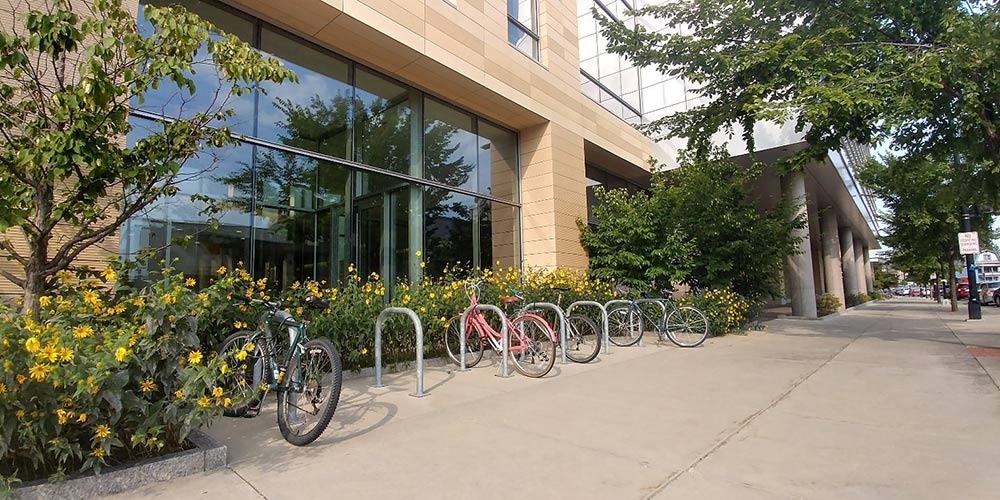
The Location and Transportation category addresses this by encouraging siting and amenities that discourage use of gas-powered vehicles. With bicycles being one of the best ways to skip a car ride, a credit worth one point is dedicated towards the building's bicycle facilities. The intent being to promote bicycling to reduce vehicle distances traveled, as well as improve public health. Many buildings here in our hometown of Madison, WI, have chosen to use this credit to help them reach their LEED goals.
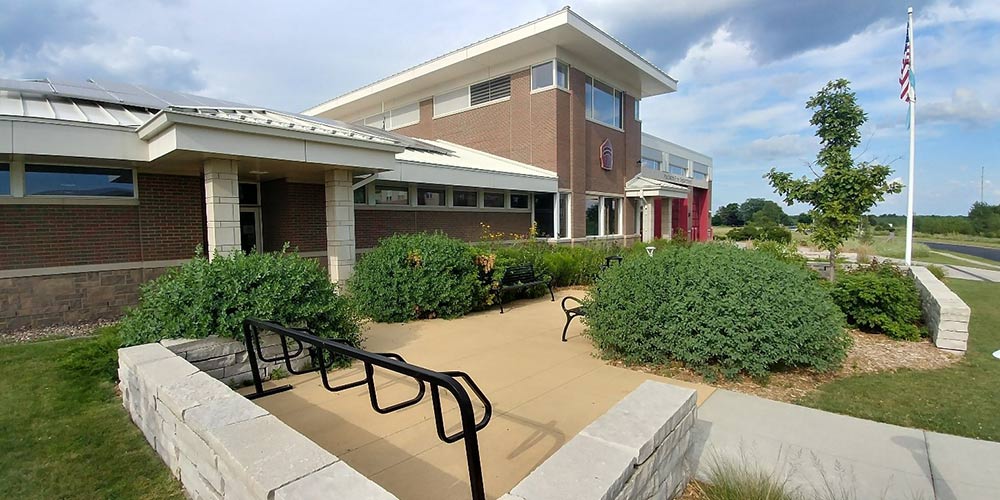 Short term bicycle racks are required to allow building visitors to easily access the site by bicycle.
Short term bicycle racks are required to allow building visitors to easily access the site by bicycle.
LEED is currently on its fourth version, which was first introduced in 2013, and is now the standard. This means any builder hoping to gain a point for their bicycle amenities must comply to the newer, more stringent requirements. These requirements vary depending on the buildings use.
The requirements under the newer rating system not only call for more bicycle parking than the previous version, but now also state requirements that differentiate between both short- and long-term parking. Short-term typically being outdoor spaces that are used for up to four hours at a time, and long-term being sheltered, and secured spaces that can be used to store bikes for as long as the user needs.These requirements also vary depending on building type.
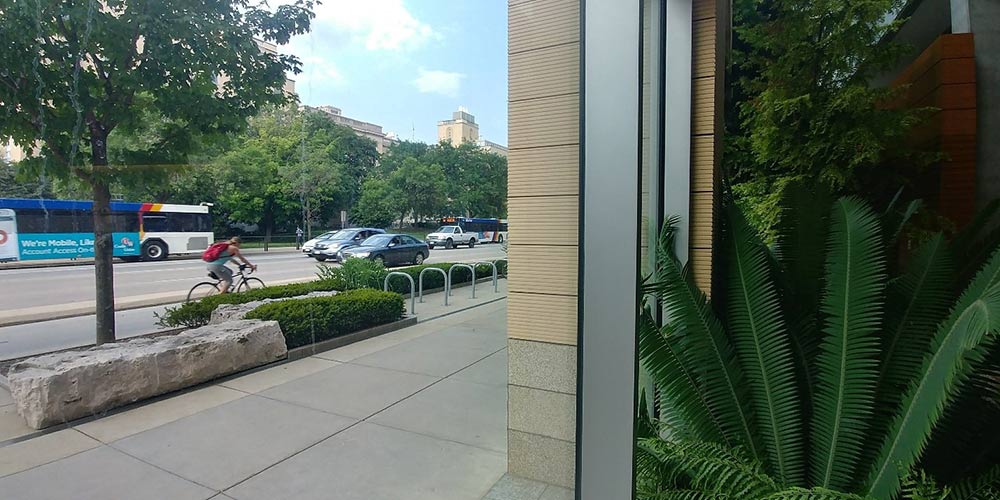 The LEED point for bicycles will now only be awarded to projects that connect to a bicycle network.
The LEED point for bicycles will now only be awarded to projects that connect to a bicycle network.
Commercial or institutional projects now require short-term spaces to accommodate 2.5% of all peak users with a minimum of four parking spaces. They must also include long terms spaces for 5% of all regular building users with no fewer than four, not including the short terms spaces.
In order to remove further barriers to bicycle commuting, these projects now require shower and changing facilities on site. This amounts to one shower for the first 100 occupants and another for every 150 people after that. It Is important that both the short term racks and showers are within 200 yards of an entrance to allow easy access to riders.
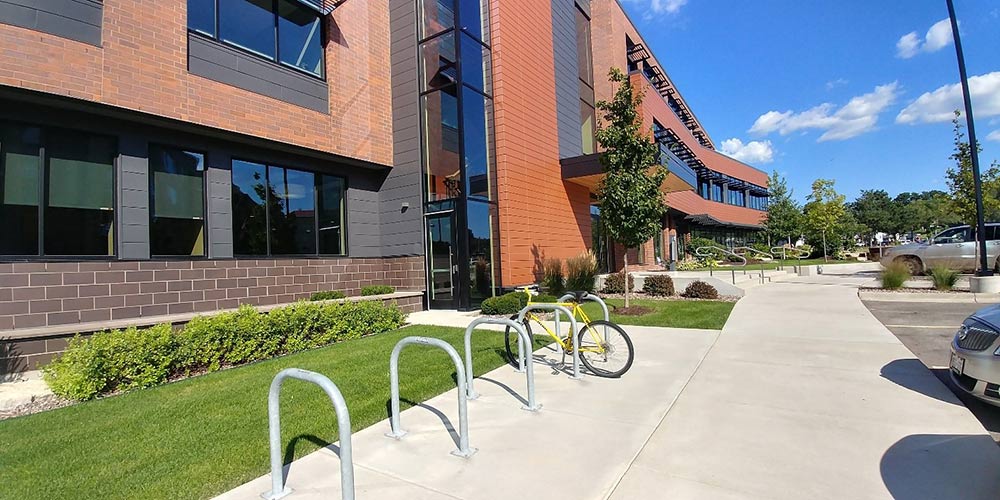
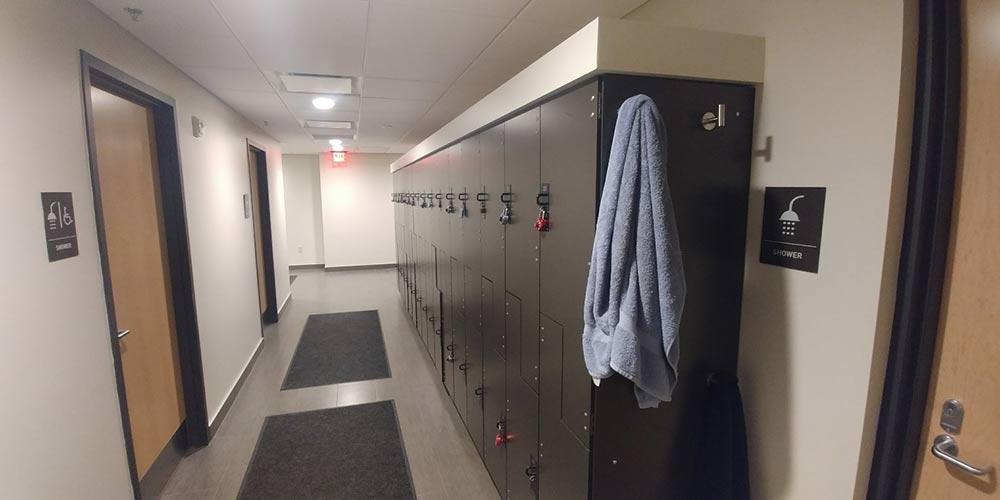 Showers and changing facilities are now required for many buildings hoping to gain a LEED point for bicycles.
Showers and changing facilities are now required for many buildings hoping to gain a LEED point for bicycles.
Residential projects similarly call for short-term spaces to accommodate 2.5% of peak users but have much larger requirements for long-term parking. To allow tenants to easily use and store their own bicycles, the building must be able to accommodate long-term spaces for 30% of all regular building occupants, with at least one bike parking space per residential unit. Residential units do not have any shower requirements as riders can use those in their apartments.
The biggest change in this new version is that all projects must now connect to a bicycle network. This assures that people can easily use their bikes for transport to and from the site rather than just store them there. To qualify, the building's bicycle storage must be within 200 yards from a network that connects within a 3-mile radius to either: 10 diverse-use sites, a school or employment center, or a rapid transit bus station, rail station or ferry terminal.
For cyclists, the benefits of adding bicycle facilities to a building is obvious, and LEED provides a quantifiable reason for doing so. Compared to many other LEED credits, the point for bicycle facilities is relatively cheap and easy to achieve. Encouraging developers to add amenities for cycling benefits not only the environment but also contributes to the health and happiness of the building's occupants by allowing them to hop on a bike and ride.
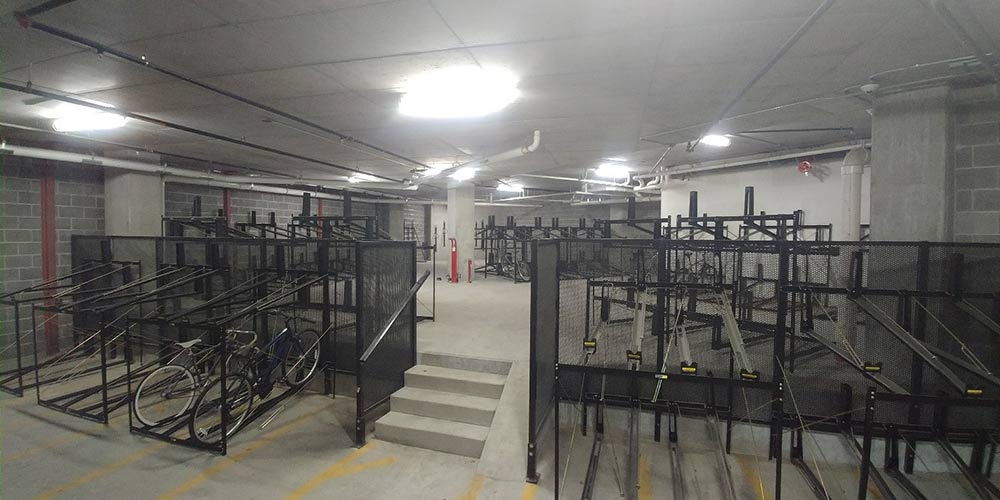
In residential buildings must supply one bike parking space for every for 30% of building occupants with at least one per unit. This often requires larger spaces dedicated to bicycle parking.


